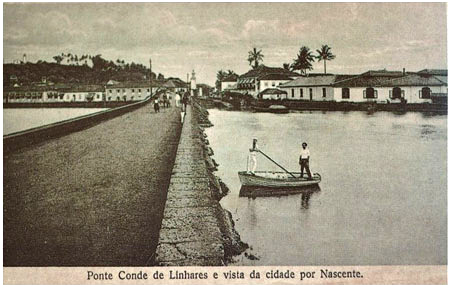[Second part added on 2NDJune 2003. Sent to Hindustan Times Delhi on 5 June 2003.]

Most readers will not have known Goa while she was still undiscovered; while she was still a lost-in-time, forgotten and unfashionable pristine paradise. I consider myself extremely lucky to have been born and raised in that Goa, and I wish I could share that experience with you.
However, I am at a loss for words to try and make you feel the way time moved at a pace so slow and so relaxed in a place at once so Latin and so Indian. Words to make you see what I saw through the eyes of an eight-year-old child: devout Christian ladies in Portuguese lace gloves and parasols, carrying their high Hindu caste like an invisible armor hanging on an invisible string from their pale upturned noses; serious learned Hindu gentlemen in Indian dhotis, Nehru cloth caps, socks and shoes, and the latest European jacket [plus a solid black British brolly for good measure] to complete an unintended premature fusion fashion statement; the smell of sunshine and dry leaves floating through a lazy sleepy village summer afternoon so hot, not even a crow could be bothered to fly out from under the shade of an over laden mango tree; screaming children running to the front verandah to watch the only car which might pass by on a red dusty road in the course of a whole week; people who ordered a carved furniture set and wisely let years go by while the master carpenters calmly went at their craft with an abundance of a precious ingredient unaffordable to today’s art: Time.
I remember the huge aristocratic mansions, the humble little huts and comfortable homely houses of all sizes in between, the ancient temples and white-washed chapels and a few rare mosques, all safely hidden under millions of coconut trees… the allopathic and country and witch doctors, all eyeing each other with studied suspicion… the tamed rice fields and wild lush forests and virgin silver beaches spilling one into the other.
And above all, Goa’s basically friendly people practicing two main religions, speaking two main languages and abiding by two thousand unwritten social dictates, all co-existing in a harmony which stood firmly on one unshakeable philosophy: live and let live, and while we’re at it, let’s sing a song and share a drink to help the time go by.
No, I cannot accurately describe what it felt like growing up in such a place during such an epoch. I can, however, suggest you read Gabriel Garcia Marquez. It doesn’t matter that he writes about South America. The villages, the houses, the people, the states of mind, and above all the ghosts past, present and future he describes to poetically – that could well be the Goa I once knew and loved so well.
……………………….
And know and love so well still. Floating gently down to the present, I shall resist all temptation to say that Goa today has ‘gone to the dogs’. Because she hasn’t. The Goa I spoke about was simply too beautiful and precious to remain undiscovered, unknown and unexploited. Something big was bound to happen. So tremors were felt, signs appeared in the sky, and a boom headed her way. But what was it to be: an industrial boom? A mining boom? An IT boom? A tourist boom? Luckily for her, it was the latter. It was certainly the lesser of all evils.
This is of course highly debatable; people say tourism has commercialized and killed her roots and customs. I say its just the contrary; it made her dig out her grandma’s recipes, folk dresses, songs and customs from the dusty old attic – alright, she did it to serve it all up to the tourists; but so what? At least tourism made her do it. She was in danger of forgetting that precious old treasure-filled attic anyway, which itself was in danger of collapsing under the onslaught of industry and mining. Tourism made Goa take another look at herself and rediscover her past. And it made her want to preserve it for the future.
And I think we’re really lucky in the kind of tourism we’ve got. No, its not as high-class and exclusive as the one in the Seychelles, but it is down-to-earth and humane. The middle class, middle aged Europeans who come in charter flights are a jolly friendly lot of simple folk looking for a bit of sunshine and an economical seafood meal on the beach, not gambling casinos or shady night clubs or giant malls. And the younger, more adventurous back-packers bring with them new freaky ideas, music, dress codes and hair colors. Yes, they do take in a few drugs, but all they do after taking them is dance. They respect nature, peace and harmony; they keep the beaches clean [it is our local shack owners who dump all their plastic bottles in heaps]; and most importantly, they do not go looking for local sex. Our Goan girls – for that matter, our Indian girls – haven’t turned into traders for tourists the way they have in Thailand. Hats off to the poorer women of our once third-world country.
And as far as preservation is concerned, we did start late, but we’ve started. Old Latin quarters, majestic colonial buildings, ancient temples and water tanks, are all getting the restoration and face lift they have long yearned for. And together with the old, we also have the new. Together with the bad, we also have the good. There are crowded beaches full of action, full of hotels of all shapes and sizes. And there are empty beaches which are near virginal. There are rice fields ruined by construction, and there are rice fields which – very simply – grow rice. There’s Goa Trance, and there’s the Goan Mando. There are concrete abominations, and there are gracious old Goan houses.
Yes, Goa today has moved. Very fast, and very far. But the Goa of yesterday is just below the surface. One little scratch, and you see it in all its glory. Look for it, and you shall find. Insist on it, and you shall help preserve.
